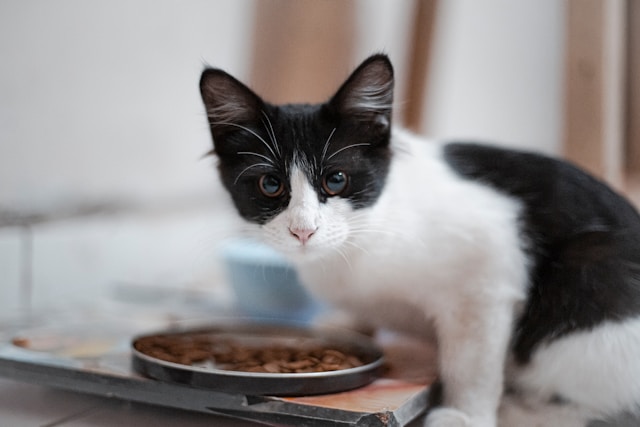
The Impact of Pet Food Quality on the Long-Term Health of Cats
In the age of premium kibble, raw diets, and boutique pet food brands, cat owners are more conscious than ever about what goes into their feline companions’ food bowls. But with the market flooded by clever marketing, buzzwords, and confusing ingredient lists, one question still looms large: Does the quality of your cat’s food truly influence their long-term health?
The answer is a resounding yes. Nutrition plays a pivotal role in a cat’s physical condition, behavior, immune function, and longevity. Cats are obligate carnivores, meaning they rely on a diet high in animal-based proteins and specific amino acids that plant-based or low-quality foods simply can’t provide.
In this article, we’ll explore the critical impact of pet food quality on feline health, what to look for in a cat food label, red flags to avoid, and how feeding your cat the right diet from the beginning can set the stage for a longer, healthier life.
Understanding the Nutritional Needs of Cats
Before diving into food quality, it’s essential to understand what optimal feline nutrition looks like.
Cats Require:
- High-protein diets: Cats need more protein than dogs to maintain muscle mass and organ function.
- Essential amino acids: Taurine, arginine, and methionine must be present in their food.
- Minimal carbohydrates: Cats don’t efficiently process carbs and don’t derive much energy from them.
- Animal-based fats: For skin and coat health, as well as overall energy.
- Vitamins and minerals: Including vitamin A, niacin, calcium, phosphorus, and omega-3 fatty acids.
Poor-quality foods may lack these essential nutrients or use low-bioavailability sources, meaning your cat can’t properly digest or absorb them.
The Role of Ingredients in Pet Food Quality
Not all ingredients are created equal. High-quality cat foods prioritize real meat, named organ meats, and minimal fillers.
Look for:
- Named protein sources: “Chicken,” “salmon,” or “turkey” vs. generic “meat” or “meat by-product”
- Whole food ingredients: Like sweet potatoes, pumpkin, blueberries (used in moderation)
- Supplemented taurine and omega-3s: Critical for heart and eye health
- AAFCO approval: Indicates a food meets established minimum nutritional standards
Avoid:
- Meat by-products (unnamed): Can include low-quality protein from non-muscle parts
- Artificial colors and preservatives: Such as BHA, BHT, or ethoxyquin
- Excessive plant-based proteins: Like corn gluten meal or soy, which are harder for cats to digest
- Sugar and salt additives: Used to enhance flavor but offer no nutritional value
How Food Quality Affects Long-Term Health
1. Weight Management and Obesity Prevention
Low-quality pet foods often contain:
- High carbohydrate content (corn, wheat, rice)
- Low-quality fats
- Poor protein-to-calorie ratios
These contribute to obesity, which is a major risk factor for:
- Diabetes mellitus
- Joint and mobility issues
- Liver disease
- Reduced lifespan
High-quality diets help maintain a healthy weight by providing bioavailable protein, balanced fats, and satiety-inducing fiber.
2. Urinary and Kidney Health
Cats are notoriously prone to urinary tract problems and chronic kidney disease (CKD), especially as they age.
High-quality foods:
- Encourage hydration (especially in wet food)
- Maintain optimal urinary pH
- Are low in phosphorus (important for CKD management)
- Use real, digestible animal protein rather than plant-based filler
Feeding poor-quality dry food only can lead to dehydration and urinary crystal formation, which may require surgery or lifelong management.
3. Digestive Function and Gut Health
Your cat’s gut health is vital for nutrient absorption and immune strength.
Low-quality foods often lead to:
- Diarrhea or constipation
- Smelly stools
- Food intolerance or allergies
High-quality foods are easier to digest, reduce the risk of GI upset, and may contain probiotics and prebiotics to support healthy microbiomes.
4. Skin and Coat Condition
The condition of your cat’s coat reflects internal health. Omega-3 and 6 fatty acids from animal-based fats and fish oils promote:
- Soft, shiny fur
- Reduced shedding
- Fewer hairballs
- Healthy skin, free from flakes or dryness
Inferior foods may lead to dull coats, itchy skin, and increased grooming problems.
5. Immune System Support
A strong immune system helps cats fight infections, recover faster, and age gracefully. Nutrients like:
- Vitamin E and C
- Selenium and zinc
- Omega fatty acids
- Antioxidants
…are commonly found in premium foods and are lacking in economy brands that rely on bulk fillers.
6. Dental Health
While dry kibble has been traditionally marketed as good for dental health, the quality of ingredients matters far more.
Some high-quality dry foods and specially formulated dental diets contain:
- Larger kibble for mechanical cleaning
- Enzymes to reduce plaque
- Balanced minerals to prevent tartar
Wet and raw diets can also support dental health when paired with chewable dental treats or brushing.
Comparing Different Food Types and Their Impact
1. Dry Kibble (Extruded Food)
✅ Pros:
- Convenient and affordable
- Long shelf life
- Can support dental hygiene
❌ Cons:
- Low moisture content (bad for urinary health)
- Often high in carbs and fillers
- Less palatable for picky eaters
Choose high-quality kibble with real meat as the first ingredient and no artificial additives.
2. Wet Food (Canned or Pouched)
✅ Pros:
- High moisture supports kidney and urinary health
- Generally more palatable
- Often contains fewer carbs
❌ Cons:
- Higher cost
- Shorter shelf life once opened
- Can be messy
Best used as a primary or supplemental diet, especially for older cats or those prone to dehydration.
3. Raw and Freeze-Dried Raw
✅ Pros:
- Mimics natural diet (high in protein, low in carbs)
- Highly digestible and bioavailable
- Minimal processing
❌ Cons:
- Risk of bacterial contamination (especially in homemade raw)
- Needs proper balance of organs, bones, and muscle
- More expensive and time-consuming
If feeding raw, choose commercially prepared, complete-and-balanced raw diets with vet guidance.
4. Homemade Diets
✅ Pros:
- Full control over ingredients
- Can tailor to health conditions
❌ Cons:
- Nutrient imbalances are common without a veterinary nutritionist
- Time-consuming
- Requires strict food safety practices
Only feed homemade food if it’s vet-formulated and regularly reviewed for adequacy.
How to Evaluate Cat Food Labels
Reading a pet food label is like deciphering a puzzle. Here’s how to identify high-quality options:
Key Label Tips:
- Named meat first: “Chicken,” not “meat meal”
- No by-products unless specifically labeled (e.g., “chicken liver” is fine)
- Avoid corn, soy, wheat as top ingredients
- Look for AAFCO statement indicating complete and balanced nutrition
- Prefer minimal ingredient lists for sensitive cats
The Role of Your Vet in Nutritional Planning
Many pet parents make food decisions based on marketing, forums, or personal opinions. But your veterinarian or veterinary nutritionist is your best resource.
Discuss your cat’s:
- Age and activity level
- Weight and body condition score
- Health conditions
- Food preferences and sensitivities
Tailoring the diet to the individual cat ensures preventive care and longevity.
The Long-Term Cost of Low-Quality Pet Food
What seems affordable today may cost more in the long run. Low-quality food can lead to:
- Frequent vet visits
- Chronic health issues
- Expensive treatments
- Shortened lifespan
Investing in high-quality nutrition now can reduce long-term expenses and increase your cat’s quality of life.
Transitioning to a Better Diet
If you’re switching your cat to a higher-quality food:
- Do it gradually over 7–10 days
- Start with 25% new food mixed in with 75% old food
- Increase the ratio every few days
- Monitor for GI upset or rejection
- Be patient—cats may need time to adjust
Photo by Mohammad Reza on Unsplash
